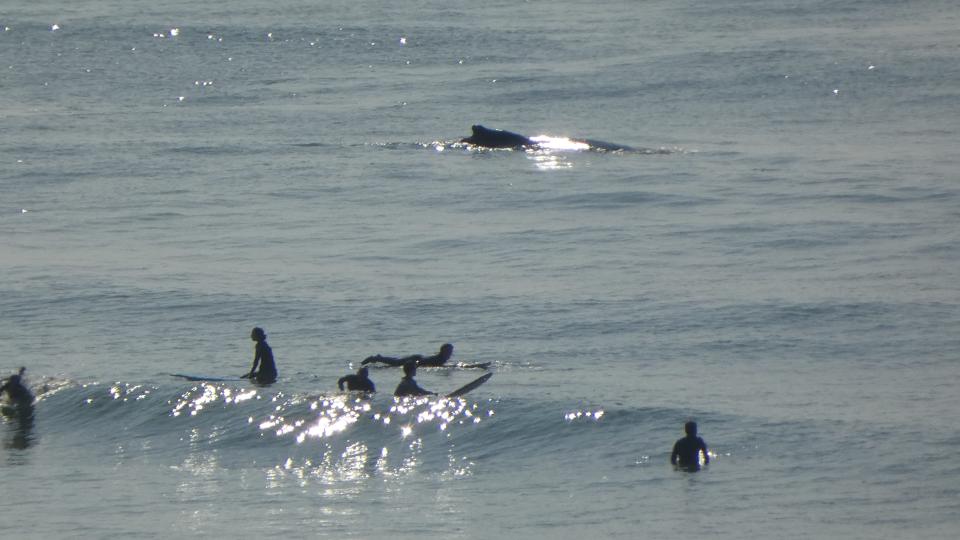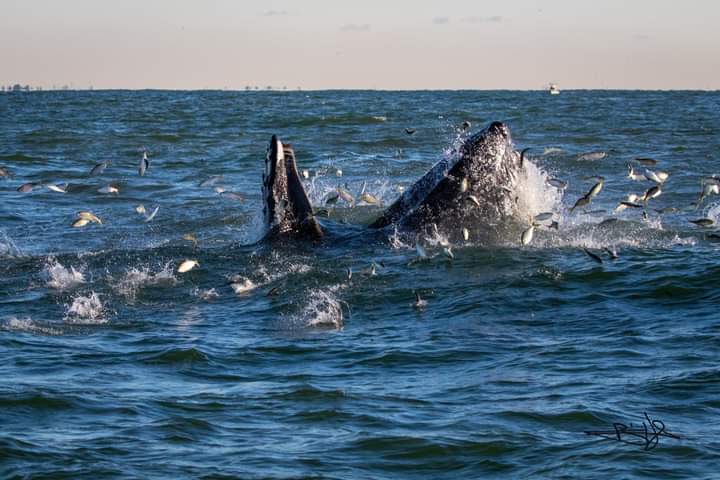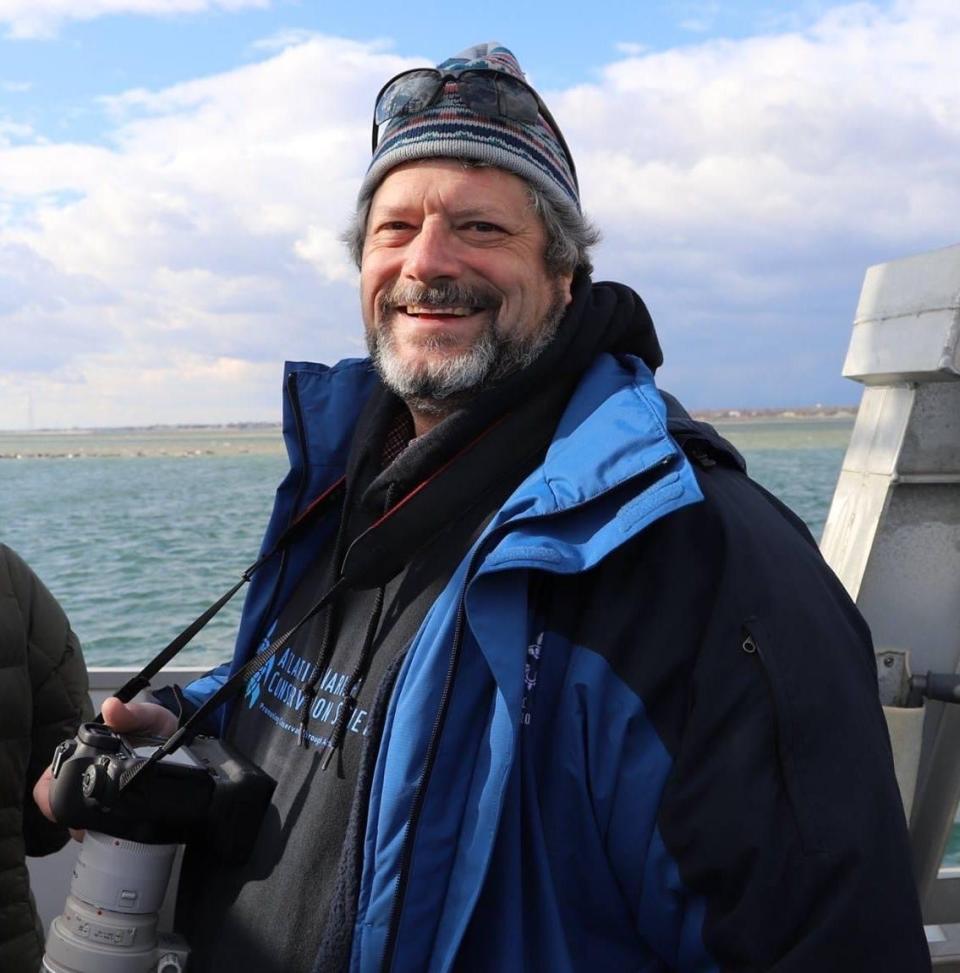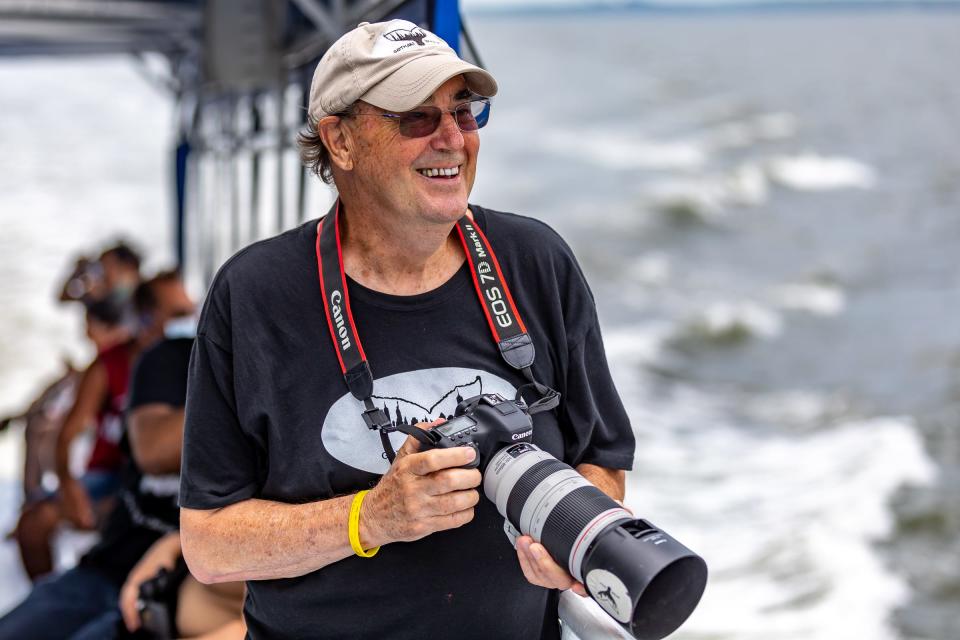Surge in whale deaths in NY waters has scientists scrambling for solutions
A dozen whales have turned up dead along New York’s Atlantic coast this year, a spike that has marine scientists scrambling to reverse a trend that’s been steadily ticking upward the past seven years.
Nine humpback whales and three minke whales have been stranded in New York, mostly on Long Island and the Rockaways, according to the National Oceanic and Atmospheric Administration. It’s suspected that eight died after being hit by vessels, NOAA says.
Eight more humpback whales have turned up in New Jersey, the highest total there since NOAA began cataloguing Atlantic Coast deaths as an Unusual Mortality Event in 2016.

Since 2016, 72 humpbacks have turned up dead off New York and New Jersey coasts, more than a third of the 208 strandings tallied between Maine and Florida, NOAA figures show.
New York’s nine humpback deaths this year, up from two last year, already equal the total from 2020.
The deaths have marine scientists like Robert DiGiovanni, the director of the Atlantic Marine Conservation Society or AMSEAS, trying to patch together a real-time picture of whale movements so they can recommend solutions.
Could mariners be alerted to whale feeding grounds or could speed limits be enacted in busy shipping channels in and out of the Port of New York and New Jersey?
Wind: Energy ratepayers bankrolling offshore wind farm opposed by Long Island fishing community
First, they’ll need to determine why they’re being struck and where they’re most likely to be found.
“Are we seeing a larger proportion of the population that’s being hit by vessels or are we seeing just more animals,” said DiGiovanni. “That’s the question that we’re trying to get at.”

Feeding time
Most evidence suggests whales are following the food. As the coastal waters of the two states have gotten healthier, surging amounts of “bunker” or menhaden have whales feeding closer to shore.
DiGiovanni calls it a “rest stop mentality.”
“Rest areas in the ‘70s had vending machines, bad coffee and you went in there and got gas and you’re probably out of there in 10 to 15 minutes,” he said. “Now, you have multiple food sources, you can get a vegan meal, you get different types of good coffee. You’re probably going to have more residence time there.”
Same for whales.
“If you have a habitat that has conditions that are favorable for these animals to be here, we’re probably going to see more here,” he said.

Francois Gauvard, 67, has been surfing the waters off Rockaway Beach for 60 years.
About 15 years ago, he spotted whales for the first time while out paddle surfing. Six or seven years ago their numbers started to grow.
“It could be early in the morning, it could be at sunset, sunrise,” he said. “It doesn’t matter. “If you see a a lot of big fish, you have more of a chance of seeing a whale come through.”
Last week he saw six humpbacks a quarter mile off Beach 134th Street in Belle Harbor.
He’s been up close to them in the water and believes they’re nimble enough to move out of the way of a giant tanker.
“When I paddle with them, they’ll get their fins within a quarter inch of me,” Gauvard said. “They know exactly where everything is in their environment. Unless they’re sick, I don’t see them getting hit by a ship that’s going seven, 14 miles an hour ... But I’m no expert.”
Paul Sieswerda is.
The former curator of the New York Aquarium in Coney Island started Gotham Whale in 2009.
The all-volunteer group relies on a network of whale watchers (there are seven whale watching excursions out of New York City) and citizens to track whales by telltale markings on their underside of their tail. To date, the group has identified 327 different whales in New York waters.
“This gives us a picture of where the whales are when they come to this area and a comprehensive view of where whales are likely to be, which we feel is one of the first questions to be answered,” Sieswerda said.

Death of #NYC0323
When a female humpback washed up on Atlantic Beach near the Rockaways Aug. 25, Sieswerda’s group recognized it as whale #NYC0323 in its catalogue. They’d seen the same 33-foot long whale in New York waters on 11 occasions since July, the last time while feeding at Sandy Hook Channel.
A necropsy conducted by AMSEAS determined it had bruising on its right side, indicating it was likely struck by a vessel. It also showed evidence of being entangled in a fish net.
And it showed that it had been feeding recently, a finding consistent with what Gotham Whale spotters had observed.
“We can say 48 hours prior to it being on the beach, it was seen actively feeding, eating,” Sieswerda said. “It was in a pretty healthy state 48 hours prior to floating up on shore.”
DiGiovanni says that sort of information, coupled with aerial surveys and data from groups that include the Wildlife Conservation Society, will be critical in gauging whale movements along the coast.
What season do they prefer to be here? Do they stick around during migration rather than move on to warmer water? How long do they stay?
Four humpback deaths in August appear to be an outlier from previous years. How does that play into the pattern?
The necropsies will also offer insights.
Marine deaths have always posed a dilemma for waterborne sleuths.
For one, whales and fish don’t die where they’re struck. They move with the current.
The Hudson River watchdog, Riverkeeper, had to confront the issue when trying to document deaths of the endangered Atlantic sturgeon deaths in 2015. Among Riverkeeper’s concerns was that sturgeon were being struck by the propellers of boats working on the construction of the Mario M. Cuomo Bridge.
The group suggested placing cages over the propellers of boats or switching to jet propulsion to prevent sturgeon strikes. State officials eventually created “bubble curtains” to limit noise during pile driving and sent out warnings to get the sturgeon to scatter.
Each morning, from his terrace on Shore Front Parkway overlooking Rockaway Beach, Timmy Moriarty peers out to see if there are whales coming through.
When he sees bunker, he knows the whales won’t be far behind.
“The bait brings them in,” said Moriarty, 65. “I come out on my terrace, I take pictures of football fields of bunker. You can see them in the water bubbling. They come in real close and the predators follow.”
Sightings: More hungry whales are flocking to ship-infested waters. It's a tragic vicious cycle near NYC.
In the five years he’s lived with an ocean view, he’s seen ten whales wash up on shore. Last year, he took video of surfers trying to rescue a sperm whale “the size of Moby Dick” who’d washed up on shore
And last week, from his terrace he spied a dead whale floating off shore. He called a friend who was out fishing.
A few hours later, the whale turned up on Atlantic Beach, several miles east.
It was #NYC0323. Workers buried her on the beach.
This article originally appeared on Rockland/Westchester Journal News: Atlantic coast whale deaths increase as scientists seek answers


